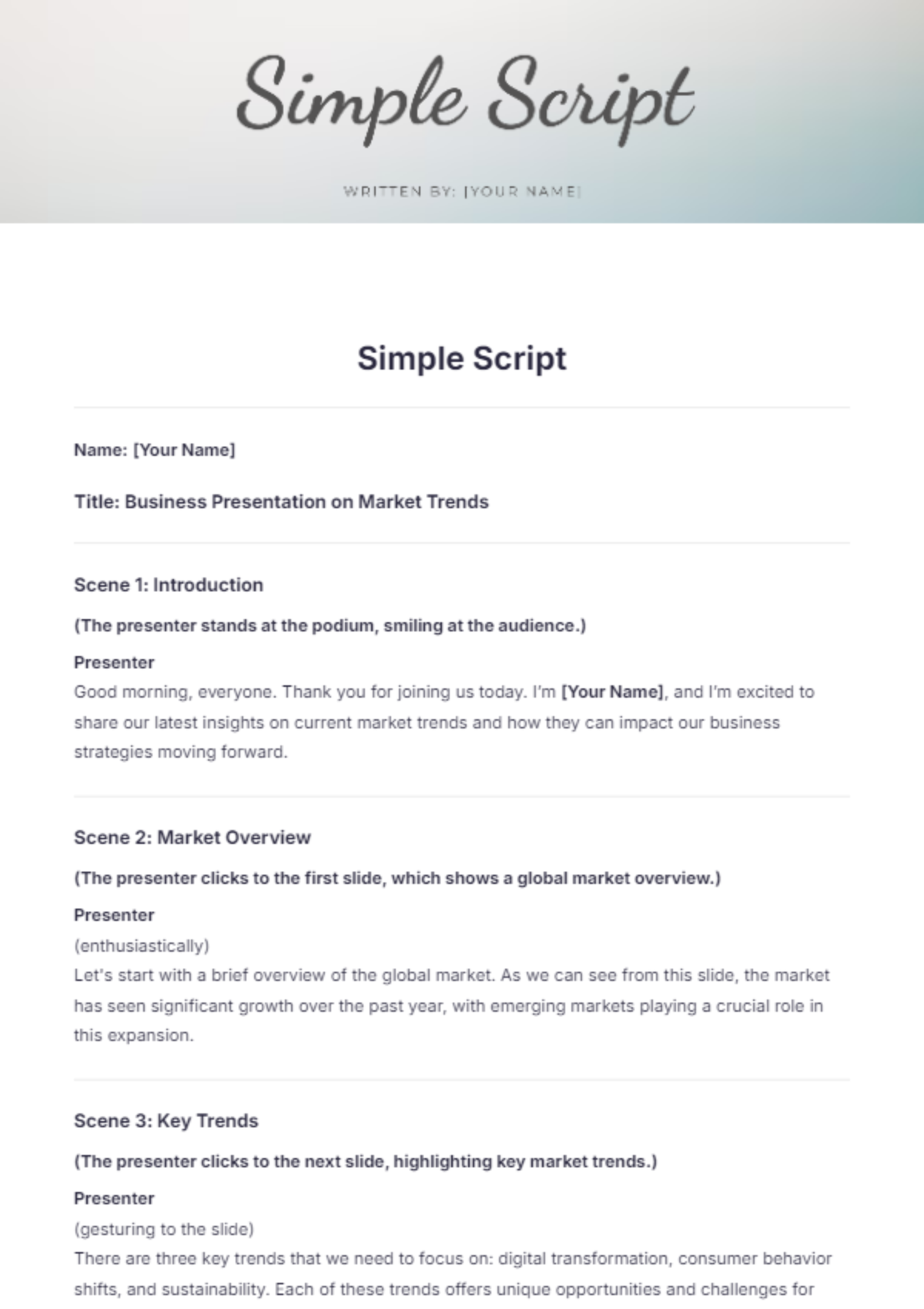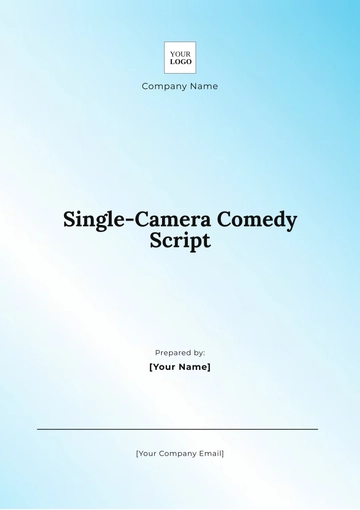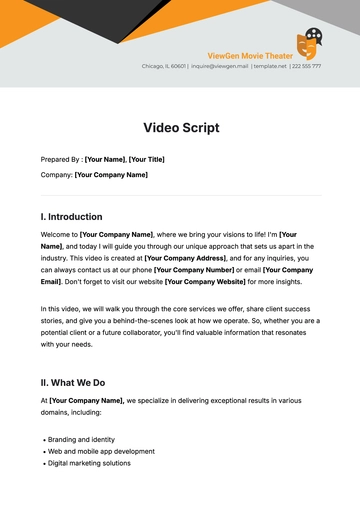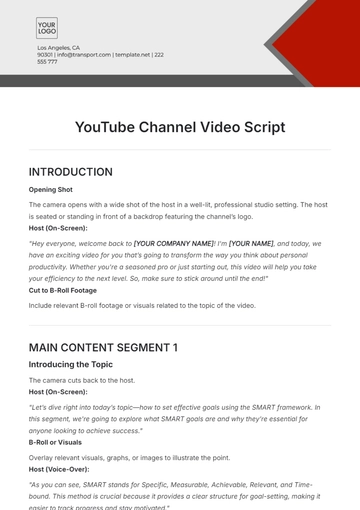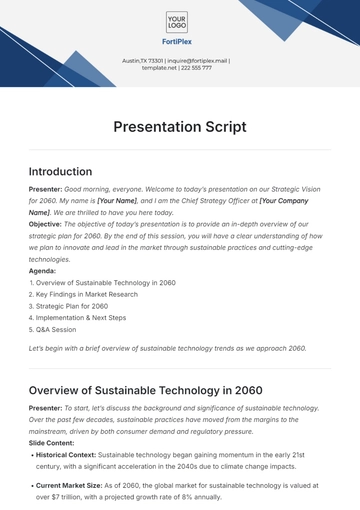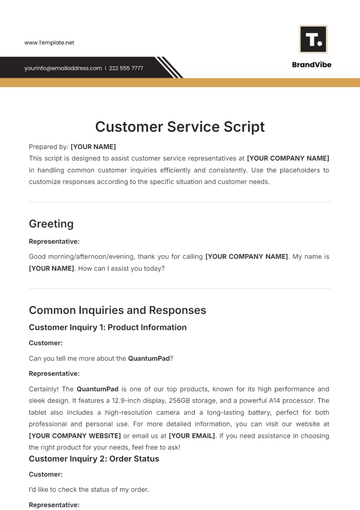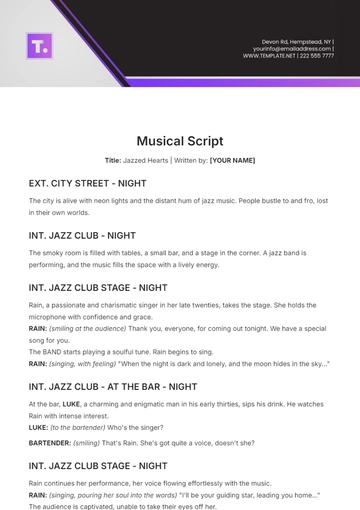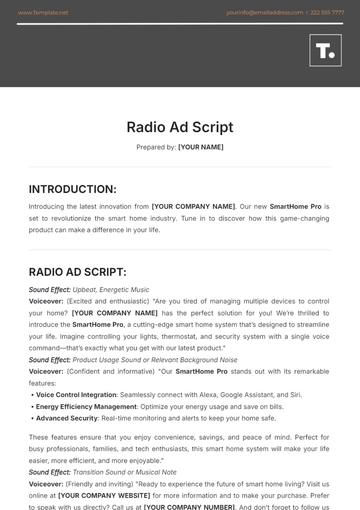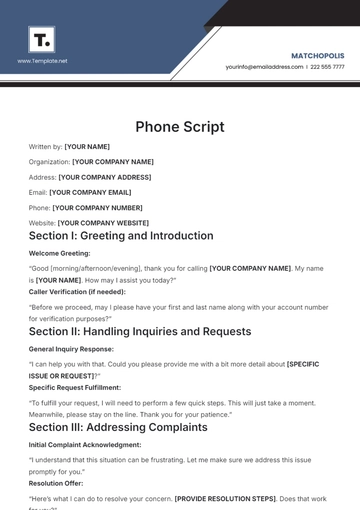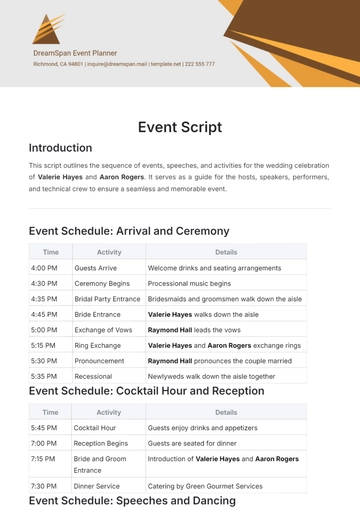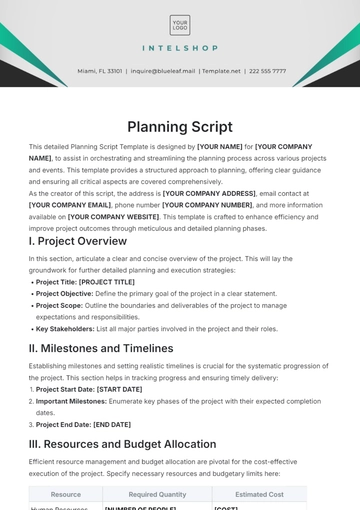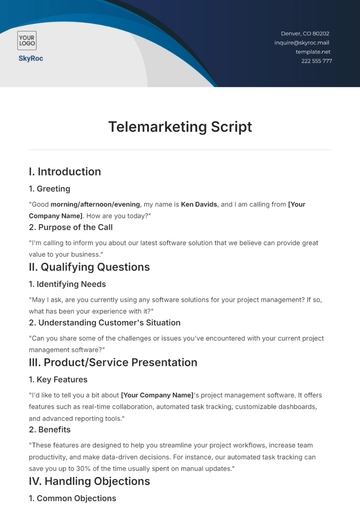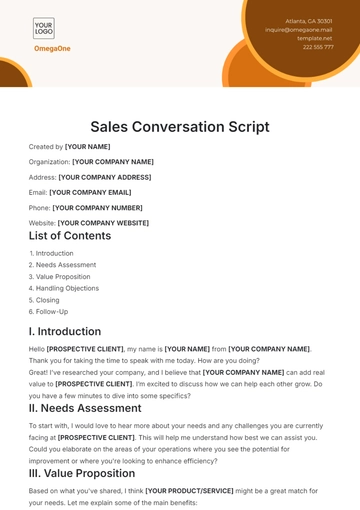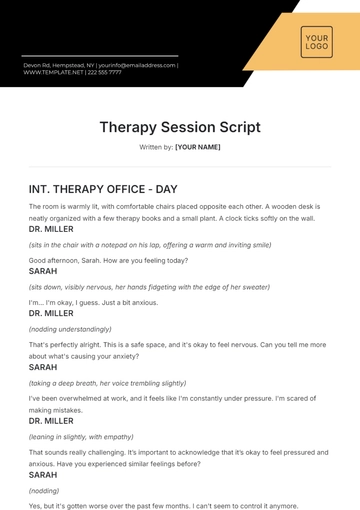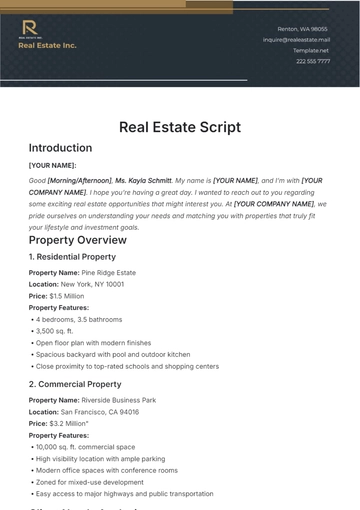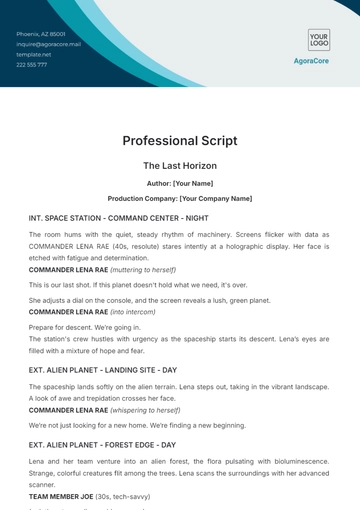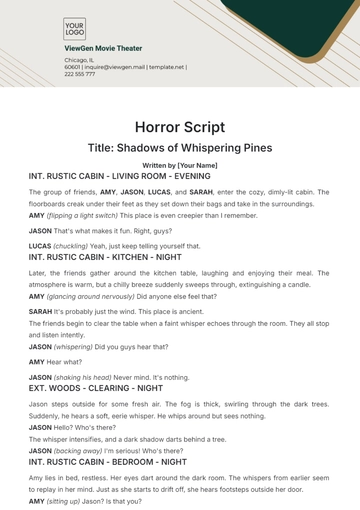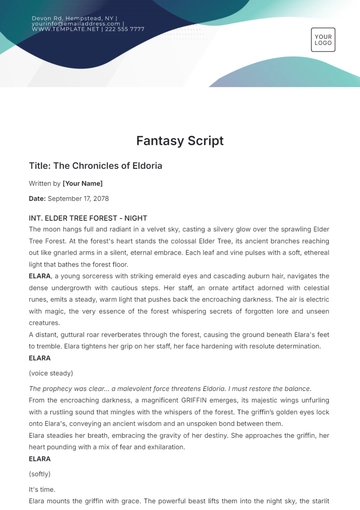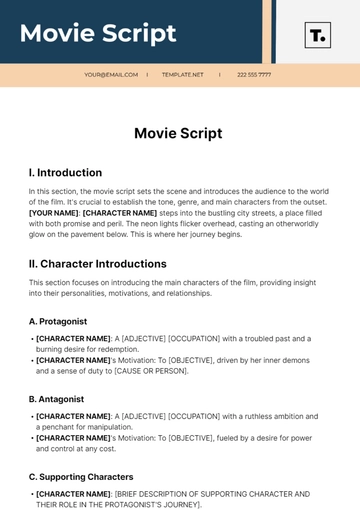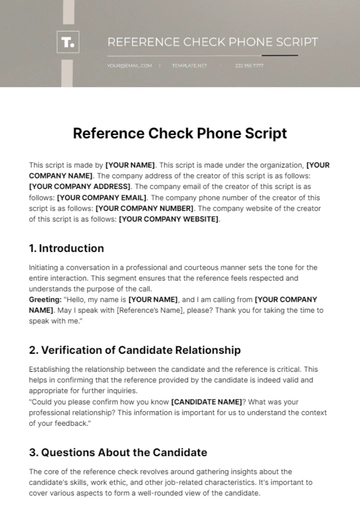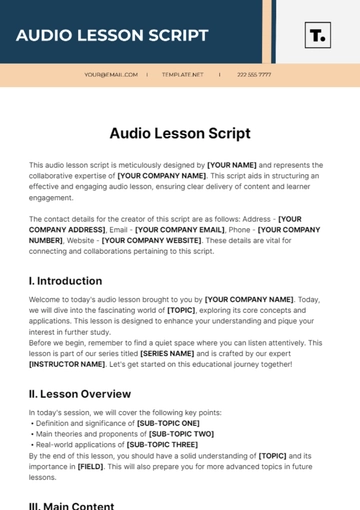Simple Script
Name: [Your Name]
Title: Business Presentation on Market Trends
Scene 1: Introduction
(The presenter stands at the podium, smiling at the audience.)
Presenter
Good morning, everyone. Thank you for joining us today. I’m [Your Name], and I’m excited to share our latest insights on current market trends and how they can impact our business strategies moving forward.
Scene 2: Market Overview
(The presenter clicks to the first slide, which shows a global market overview.)
Presenter
(enthusiastically)
Let's start with a brief overview of the global market. As we can see from this slide, the market has seen significant growth over the past year, with emerging markets playing a crucial role in this expansion.
Scene 3: Key Trends
(The presenter clicks to the next slide, highlighting key market trends.)
Presenter
(gesturing to the slide)
There are three key trends that we need to focus on: digital transformation, consumer behavior shifts, and sustainability. Each of these trends offers unique opportunities and challenges for our business.
Scene 4: Digital Transformation
(The presenter zooms in on the digital transformation trend.)
Presenter
(excitedly)
Digital transformation continues to revolutionize how businesses operate. With advancements in AI and machine learning, companies can now leverage data to make more informed decisions and enhance customer experiences.
Scene 5: Consumer Behavior Shifts
(The presenter moves to the slide on consumer behavior.)
Presenter
(clearly)
We’ve also observed notable shifts in consumer behavior. Today’s consumers are more informed and demand transparency and authenticity from brands. Understanding these shifts is critical for us to stay relevant and meet customer expectations.
Scene 6: Sustainability
(The presenter clicks to the sustainability slide.)
Presenter
(passionately)
Sustainability is no longer just a buzzword; it’s a vital component of business strategy. Companies that prioritize sustainability not only contribute to the environment but also build stronger brand loyalty among consumers.
Scene 7: Implications for Our Business
(The presenter moves to the implications slide.)
Presenter
(seriously)
So, what does this mean for our business? We need to integrate digital solutions, align our strategies with consumer behavior trends, and commit to sustainable practices. This holistic approach will position us as leaders in the market.
Scene 8: Conclusion
(The presenter clicks to the final slide, which shows a summary of the presentation.)
Presenter
(confidently)
In conclusion, by embracing these market trends, we can drive growth and innovation. Thank you for your attention, and I’m happy to answer any questions you may have.
(The presenter steps back, smiling and ready to engage with the audience.)
Script Templates @ Template.net
